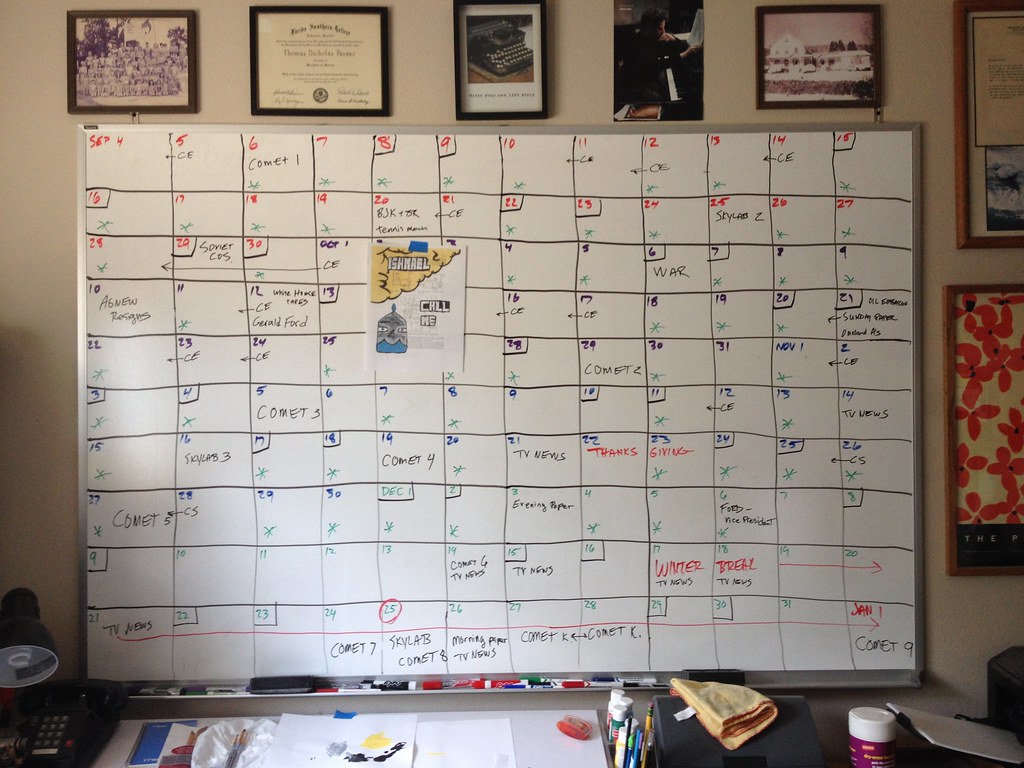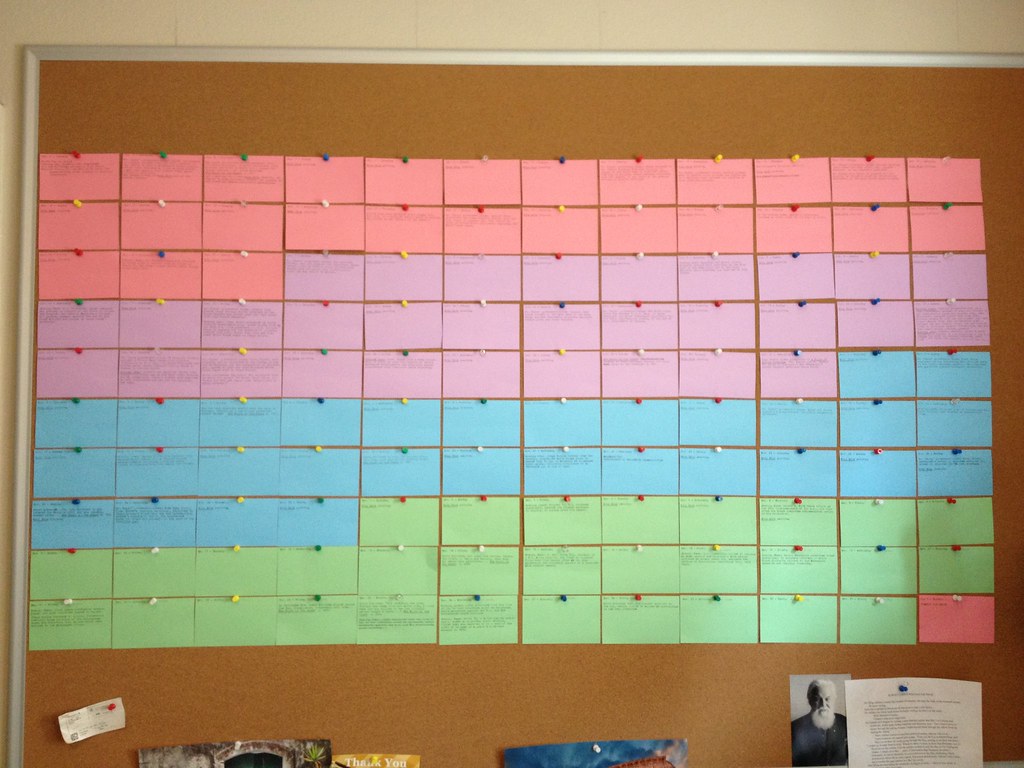Using manual processes to write in this digital age might appear odd or anachronistic — perhaps even an affectation. But I don’t care. I use what I was taught to use when I was in school. It’s a method that works for me, and I’ll stick with it.
In the initial stages of writing, I organize a story by plotting it out on my whiteboard, where it looks like an engineer’s left-brained process. I then use a portable manual typewriter (recently a Silver-Reed) and type a quick sketch of each episode on index cards. I choose to use colored index cards in order to break the narrative into the four-month timeframe of the story — a different color for each month. I tacked the index cards to my large corkboard, where the different colors pop out and demand attention. There’s also something aesthetically pleasing about the motley display.
So far I haven’t used the computer for the planning stages of my current work of fiction. To an outsider, the whiteboard, index cards, corkboard, manual typewriter — it all might seem like something Mr. Keating in “Dead Poets Society” was referring to when he said, “We’re not laying pipe.” And he was right. Writers aren’t laying pipe. But the basic blueprint, the design of the story, must be present before the actual writing begins. Some people make it up as they go along. But for me that isn’t possible. I have to work out the entire story ahead of the actual writing so that when I’m finished with the outline, there are no narrative inconsistencies. The story logic is inviolable. I can then begin writing without asking the unnerving question: What comes next? I know what comes next because I’ve figured it all out ahead of time.
Nothing could be more freeing.




No comments:
Post a Comment